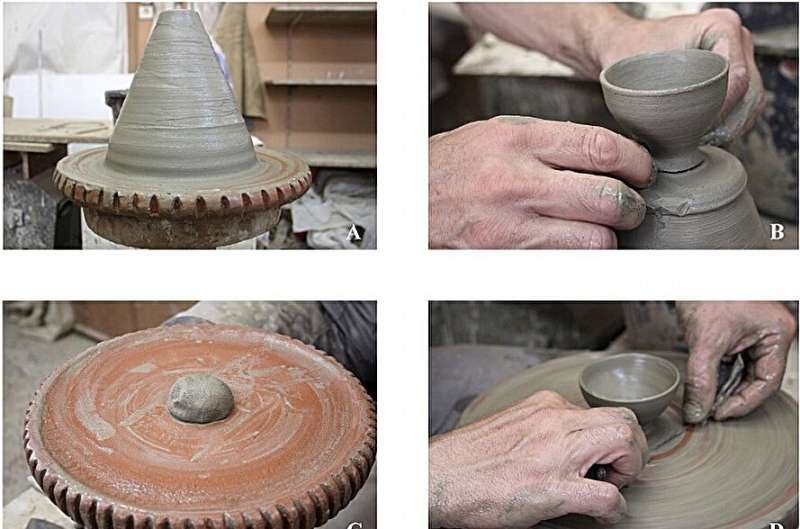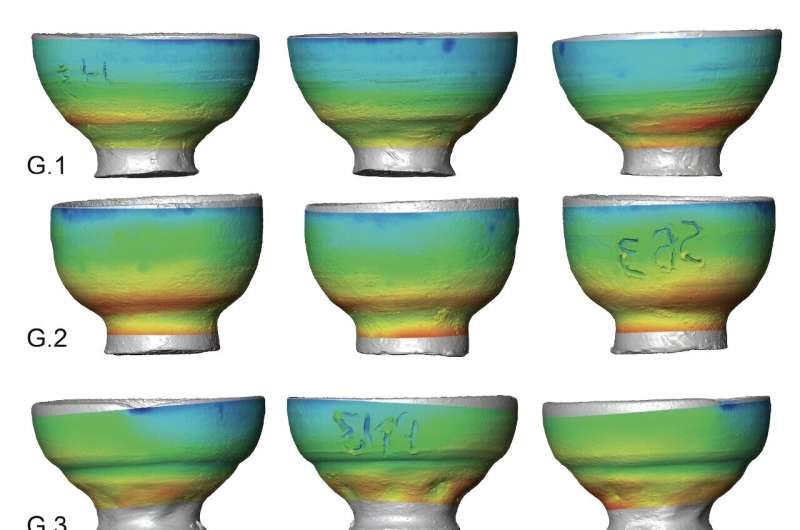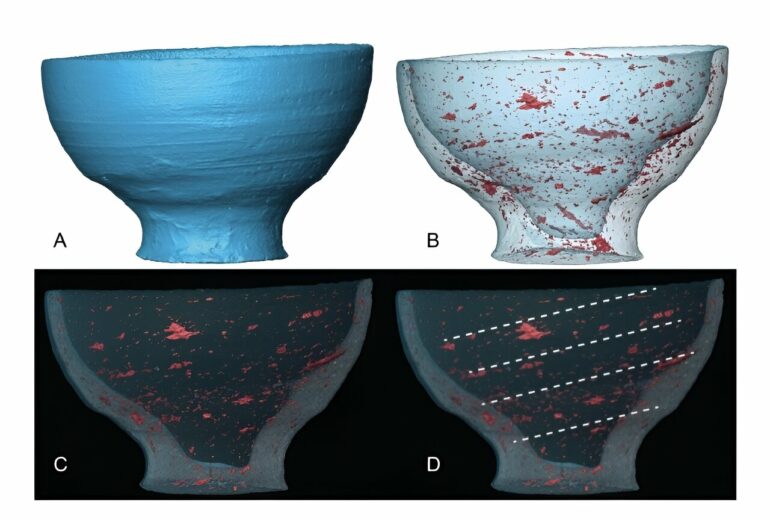Researchers from Ca’ Foscari University of Venice have uncovered insights into ancient pottery forming techniques using X-ray micro-computed tomography (microCT). The study, published in the Journal of Archaeological Science, reveals how advanced 3D imaging can reconstruct the complex processes behind Middle Bronze Age Cretan ceramics, offering a new methodology for analyzing ancient pottery.
The paper, authored by Professors Ilaria Caloi and Federico Bernardini from the Department of Humanities at Ca’ Foscari University of Venice, presents the first application of microCT to experimental ceramic vases. These vases were created either solely on the potter’s wheel or through a combination of hand-building techniques and the potter’s wheel.
The research addresses a significant challenge in archaeology: identifying the primary forming techniques of ancient ceramics. Traditional macroscopic analysis often falls short, as the potter’s wheel can obscure the surface traces of the initial forming method.
The innovative use of microCT, a technology evolved from medical computed tomography, allows for detailed 3D visualization and quantification of pottery components, including lithic particles, voids, and structural joints, without damaging the artifacts.
For this study, microCT was applied to replicas of Minoan cups from Phaistos, Southern Crete, at the Multidisciplinary Laboratory of the Abdus Salam International Center for Theoretical Physics, in Trieste.

Different ceramic techniques. © Ca’ Foscari University of Venice
These experimental replicas were produced by Cretan potter Vassiliki Politakis, in collaboration with Ilaria Caloi, following strict experimental procedures and using natural clays and tools from Minoan times. The potter’s wheel used was constructed based on models proposed by scholars of Minoan Crete. Four distinct ceramic techniques were employed: throwing-off-the-hump, wheel-throwing from a solid clay ball, wheel-pinching, and wheel-coiling.
The integration of microCT-derived information with traditional macroscopic observations has proven to be a powerful method for reconstructing the technological processes behind ancient pottery.
The study highlights several key findings, such as the identification of technological joints in cups produced using the wheel-coiling technique, differences in thickness variation between cups produced solely on the potter’s wheel and those combining hand-building techniques, and distinct void orientation patterns corresponding to different forming techniques.
Lead author Ilaria Caloi remarked, “This research represents a significant advancement in our understanding of ancient ceramic technologies. By combining traditional and advanced imaging techniques, we can more accurately reconstruct the methods used by ancient potters, highlighting their craftsmanship and technological capabilities.”

Thickness maps. © Ca’ Foscari University of Venice
Federico Bernardini added, “The integration of microCT in archaeological studies offers new possibilities for non-invasive analysis of cultural heritage artifacts. This approach preserves the integrity of the artifacts while enhancing our understanding of ancient manufacturing processes.”
This pioneering research opens new avenues for studying ancient pottery and provides a model for future archaeological investigations. The findings not only enrich our knowledge of Minoan pottery but also demonstrate the potential of combining traditional and digital methods in archaeological research.
More information:
Ilaria Caloi et al, Revealing primary forming techniques in wheel-made ceramics with X-ray microCT, Journal of Archaeological Science (2024). DOI: 10.1016/j.jas.2024.106025
Provided by
Ca’ Foscari University of Venice
Citation:
X-ray microCT unveils ancient pottery techniques (2024, July 26)


